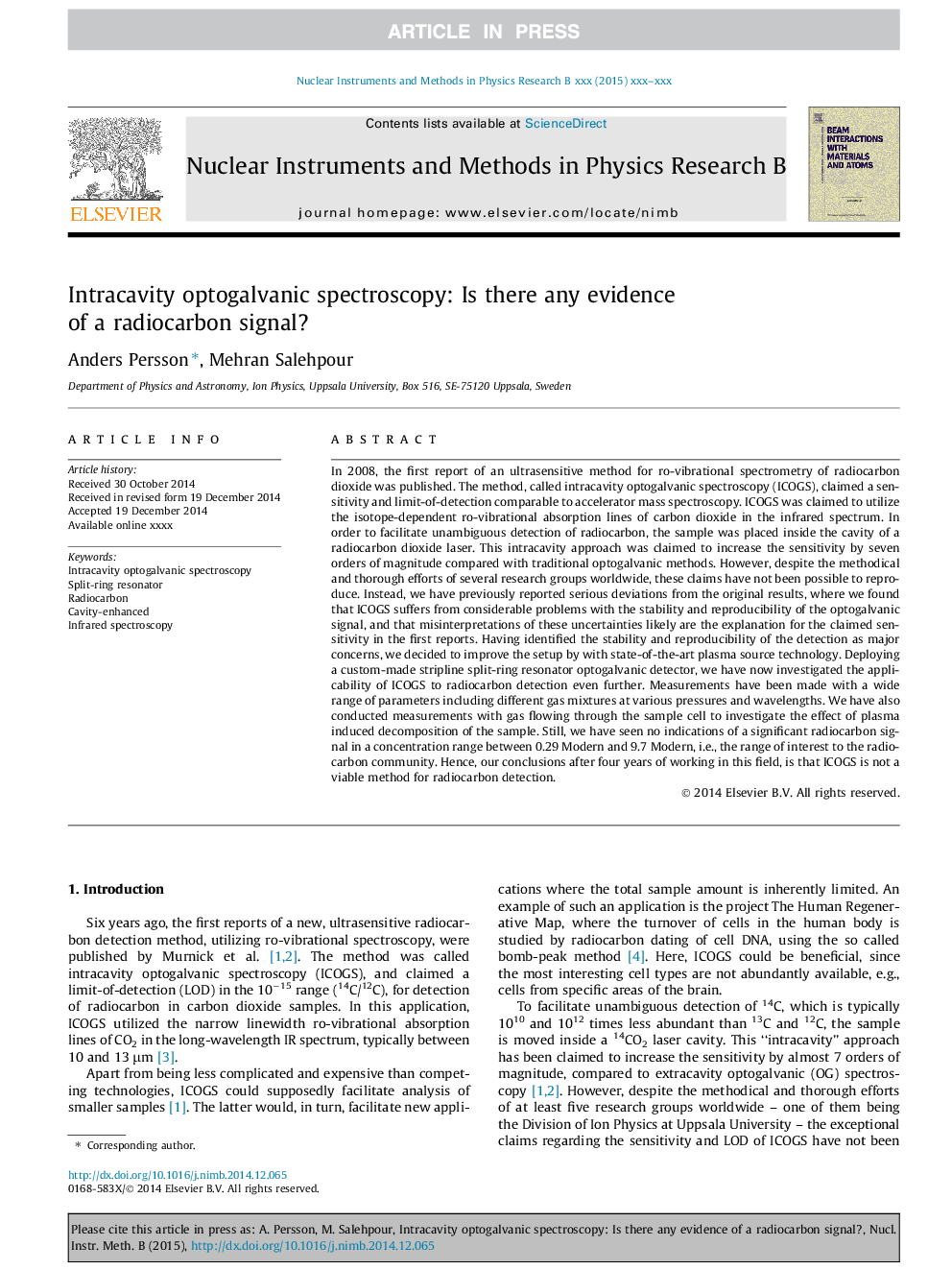| کد مقاله | کد نشریه | سال انتشار | مقاله انگلیسی | نسخه تمام متن |
|---|---|---|---|---|
| 8040163 | 1518659 | 2015 | 5 صفحه PDF | دانلود رایگان |
عنوان انگلیسی مقاله ISI
Intracavity optogalvanic spectroscopy: Is there any evidence of a radiocarbon signal?
دانلود مقاله + سفارش ترجمه
دانلود مقاله ISI انگلیسی
رایگان برای ایرانیان
کلمات کلیدی
موضوعات مرتبط
مهندسی و علوم پایه
مهندسی مواد
سطوح، پوششها و فیلمها
پیش نمایش صفحه اول مقاله

چکیده انگلیسی
In 2008, the first report of an ultrasensitive method for ro-vibrational spectrometry of radiocarbon dioxide was published. The method, called intracavity optogalvanic spectroscopy (ICOGS), claimed a sensitivity and limit-of-detection comparable to accelerator mass spectroscopy. ICOGS was claimed to utilize the isotope-dependent ro-vibrational absorption lines of carbon dioxide in the infrared spectrum. In order to facilitate unambiguous detection of radiocarbon, the sample was placed inside the cavity of a radiocarbon dioxide laser. This intracavity approach was claimed to increase the sensitivity by seven orders of magnitude compared with traditional optogalvanic methods. However, despite the methodical and thorough efforts of several research groups worldwide, these claims have not been possible to reproduce. Instead, we have previously reported serious deviations from the original results, where we found that ICOGS suffers from considerable problems with the stability and reproducibility of the optogalvanic signal, and that misinterpretations of these uncertainties likely are the explanation for the claimed sensitivity in the first reports. Having identified the stability and reproducibility of the detection as major concerns, we decided to improve the setup by with state-of-the-art plasma source technology. Deploying a custom-made stripline split-ring resonator optogalvanic detector, we have now investigated the applicability of ICOGS to radiocarbon detection even further. Measurements have been made with a wide range of parameters including different gas mixtures at various pressures and wavelengths. We have also conducted measurements with gas flowing through the sample cell to investigate the effect of plasma induced decomposition of the sample. Still, we have seen no indications of a significant radiocarbon signal in a concentration range between 0.29 Modern and 9.7 Modern, i.e., the range of interest to the radiocarbon community. Hence, our conclusions after four years of working in this field, is that ICOGS is not a viable method for radiocarbon detection.
ناشر
Database: Elsevier - ScienceDirect (ساینس دایرکت)
Journal: Nuclear Instruments and Methods in Physics Research Section B: Beam Interactions with Materials and Atoms - Volume 361, 15 October 2015, Pages 8-12
Journal: Nuclear Instruments and Methods in Physics Research Section B: Beam Interactions with Materials and Atoms - Volume 361, 15 October 2015, Pages 8-12
نویسندگان
Anders Persson, Mehran Salehpour,